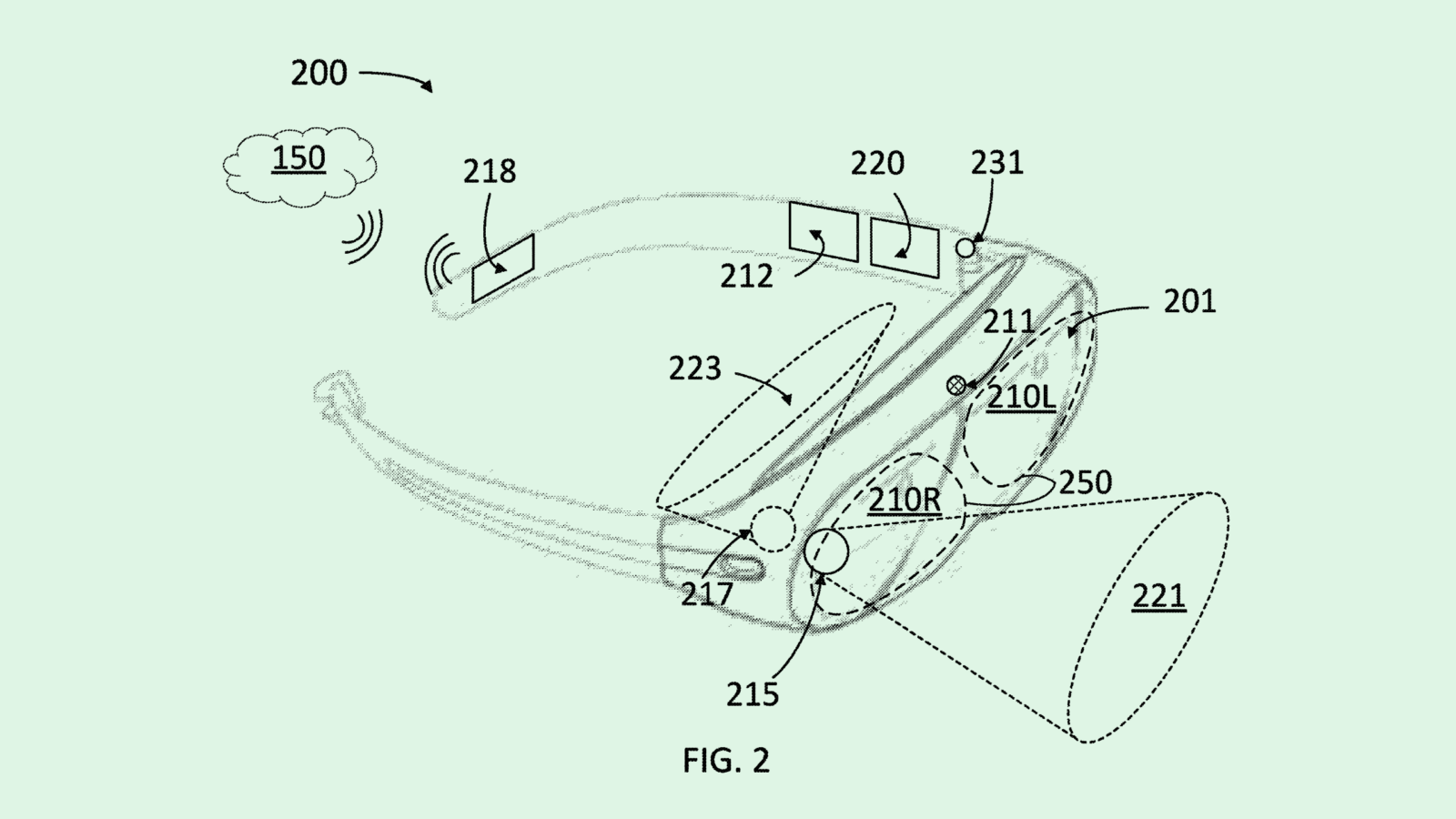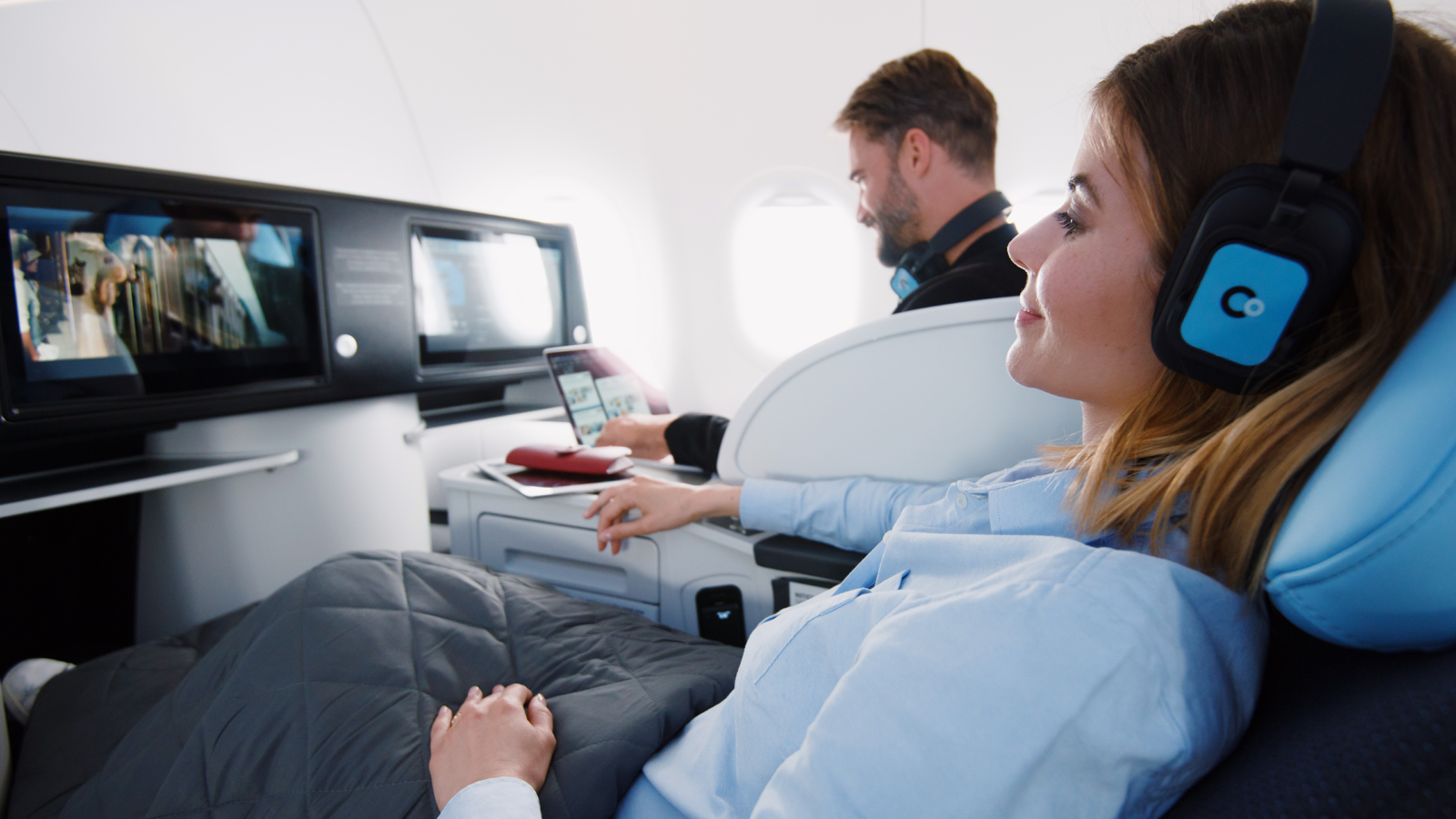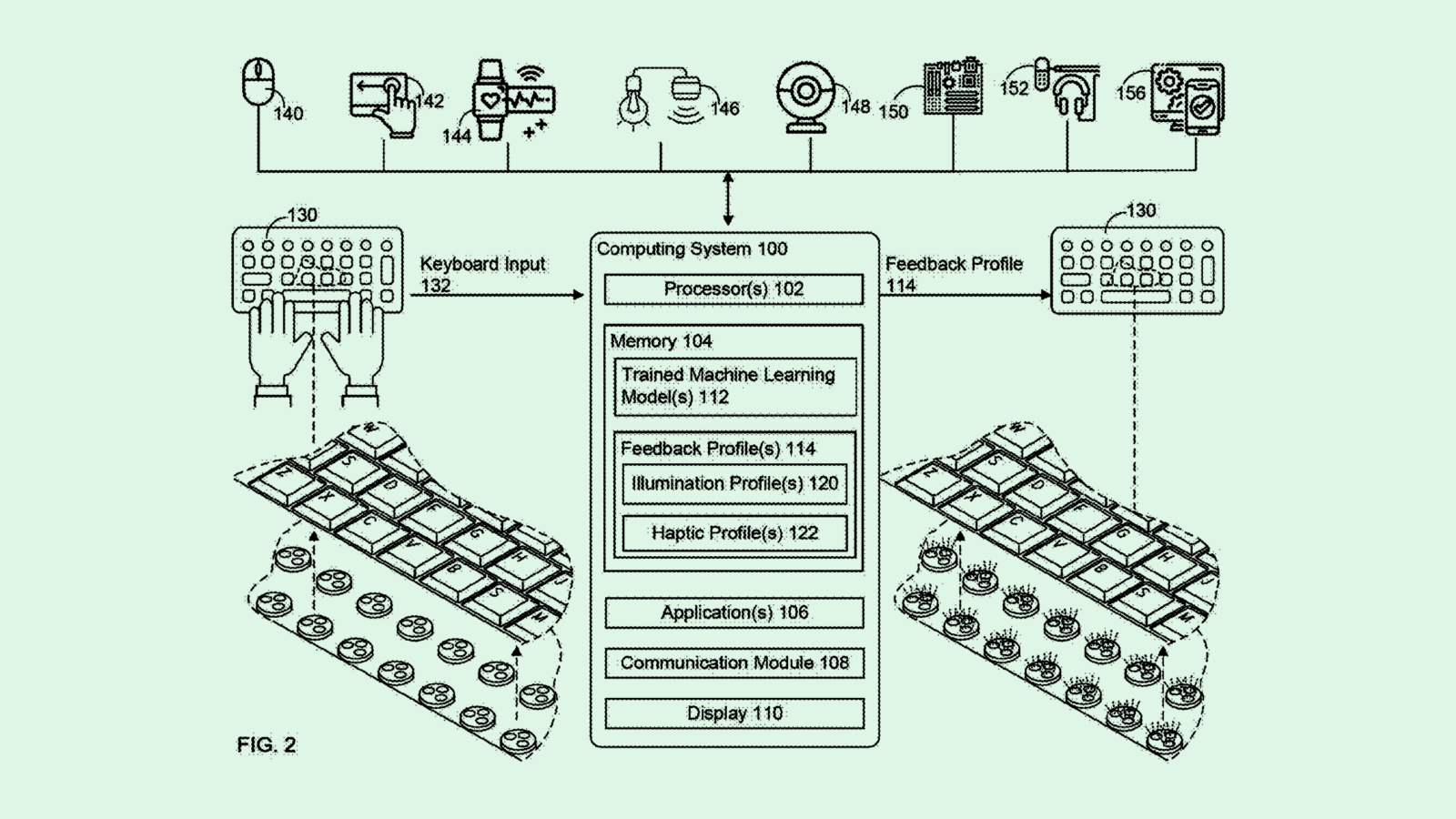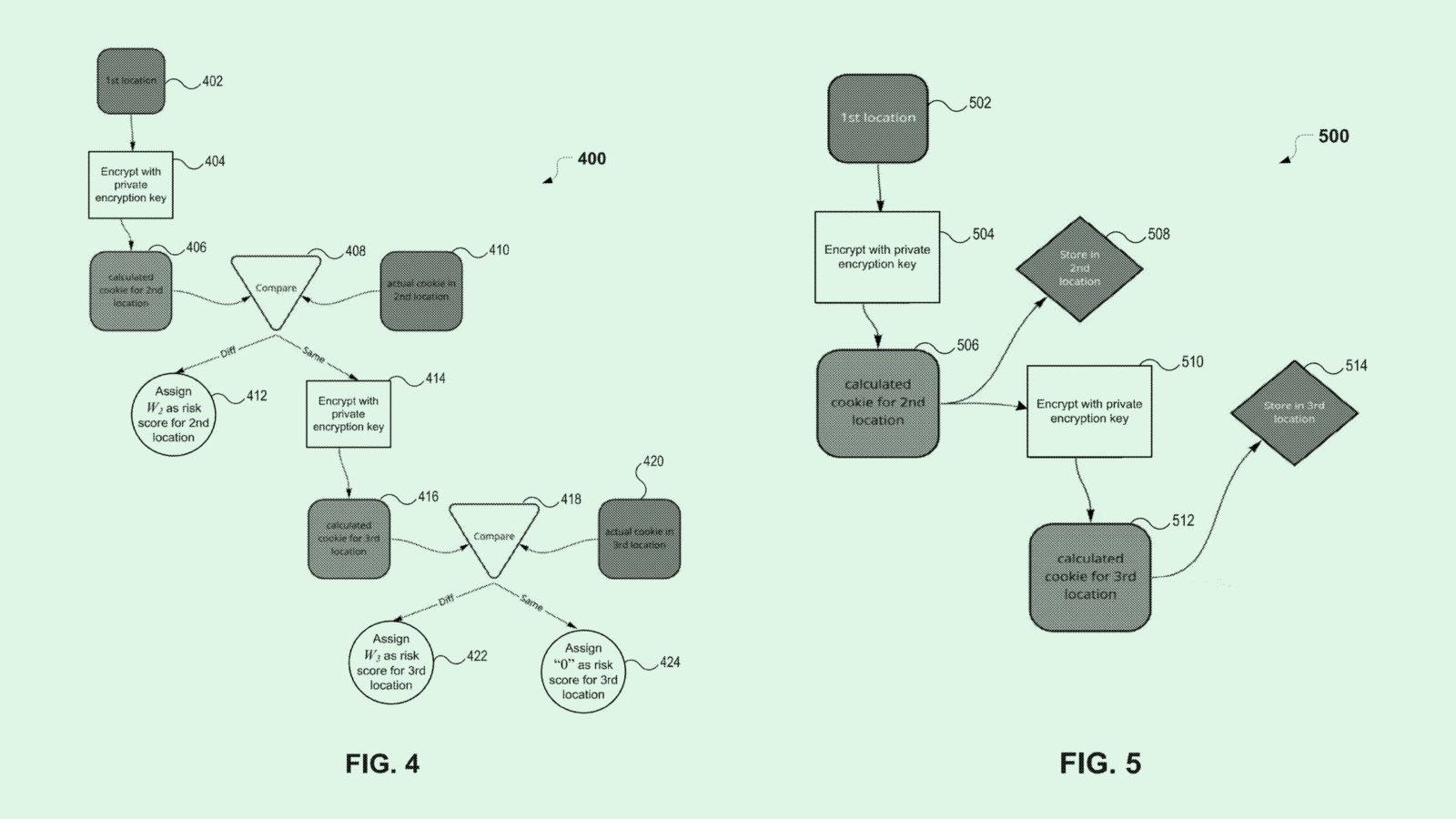Happy Thursday and welcome to Patent Drop!
Today, Meta’s latest patent may detail plans for a slimmer, lighter and longer-lasting mixed reality headset. Plus: Google wants to fight burnout with your keyboard; and PayPal wants to shut down the super-cookie bakery.
Before we get into it, let’s take a moment to talk about travel. How many times have you crammed into coach to avoid emptying your wallet for a business class seat? Most airlines have squeezed the elegance out of travel in search of profit, but La Compagnie is bringing affordable luxury back to the skies. Learn more about La Compagnie business-class only flights.
Now, let’s take a look.
Meta Lightens the Load
Meta wants your mixed reality headset to be in tune with the world around you.
The company is seeking to patent a “reconfigurable headset” that transitions between VR, AR and “actual reality.” Meta’s filing essentially describes a lighter and more environmentally aware mixed-reality device that switches modes “according to the scenario.”
Conventional artificial reality devices typically are either AR or VR — not both — because the “transition between these different configurations within a single device is challenging given the complexity of each configuration mode and the associated hardware,” Meta noted.
While displaying content for a user in whichever mode they are in, Meta’s headset will monitor the user’s environment to identify potential hazards using motion sensors, image capture and audio sensors. If a hazard is identified, such as if a user’s pet runs near their legs while they’re in VR, the system will alert the user and switch to a “direct reality” mode that displays a “real-time image of an environment.”
If a user desires to change the mode for themselves, the system would use a host of sensors to capture gestures indicating this change, without the need for controllers. For example, Meta noted, the system may use GPS location to determine “a 3D position of headset,” accelerometers or gyroscopes to determine movements such as head nods or shakes, or a front-view camera to capture hand motions such as snaps or waves.
Meta’s filing also notes that this device aims to blend the real world into its virtual one, enhancing interactions with the people in front of them by allowing them to “become a “real life companion” directly into the user’s virtual world seamlessly.”
Notably, Meta also said in the filing that the headset is lightweight (resembling a pair of glasses in the diagrams), and has a significantly longer battery life (between 8 to 12 hours, compared to the Quest Pro’s two-hour battery life) that “can be used for extended periods of time in different circumstances.”

It’s no secret that Meta wants to make its tech lighter. Smart glasses and AR technology are a major piece of its product roadmap through 2027. The company is already on its way to lighter wearables with the debut of its smart glasses in partnership with Ray-Ban, though these frames don’t come with augmented reality features. This patent may provide a look-ahead at what a built-out pair of smart glasses from Meta may offer.
However, a lot of what Meta has in store is in direct competition with Apple’s latest offering, the Vision Pro, such as passthrough capabilities and at least some recognition of the outside world, said D.J. Smith, co-founder and chief creative officer at The Glimpse Group.
While Apple’s release of the Vision Pro has created another competitor for Meta, it’s also created more excitement about the artificial reality market after a year when consumers and investors alike stepped away from the concept, said Tejas Dessai, research analyst at Global X ETFs.
“Apple’s entry validates this space,” said Dessai. “It also signals that Meta’s ambitions and decade-long pursuit of this wearable technology wasn’t wasteful… (Apple) will play a massive role in bringing mass awareness about this technology.”
However, while videos of people in self-driving Teslas wearing Vision Pro headsets may have you thinking otherwise, extended reality that’s wearable in any environment has yet to crack into the mainstream. Making these devices lightweight, energy-efficient and having a seamless transition between modes may be the key to getting people to actually wear them, said Smith.
“This is really a glimpse at what the future of spatial computing is,” said Smith. “(Current technology) is not really designed to be used outside of the house. What we’re looking at now with a true pair of glasses and an 8-to-10-hour battery life, that’s now becoming an all-day usable item.”
But ease of use isn’t the only factor to consider, said Smith. The price tag of these devices also may create a barrier to entry. While Meta’s lower-end devices range start at around $250, its latest headset in the Quest line starts at $1,000. The Vision Pro headsets, meanwhile, cost around $3,500 each. Plus, the average consumer simply isn’t really used to spatial computing as a concept, he said. “It takes time for people to embrace that and realize the advantages of it.”
Elevate Your International Travel with La Compagnie

Nostalgic for the golden days of aviation, when buying a business class ticket meant the journey could be as enjoyable as the destination?
La Compagnie, an all-business class airline has reinvented travel across the Atlantic with the charm and elegance of a bygone era.
With La Compagnie, flying with class doesn’t mean breaking the budget, with prices 30% to 50% cheaper than the competition. Round-trip from New York to Paris or Milan start at just $2,400.
With La Compagnie, you’ll enjoy:
- Unlimited and free Wi-Fi
- Elegant cuisine and a 4-course menu
- Lay-flat seats for proper R&R before a big meeting
Plus, kick back in a business-class lounge while you await your flight.
Explore how flying with La Compagnie can elevate your travel experience.
Google’s AI Burnout Tracker
Google is taking mindfulness beyond phone apps and YouTube tutorials.
The company filed a patent application for a “personal wellness keyboard” that uses machine learning to track and respond to user sentiments and behaviors through their keystrokes.
“Prolonged device usage may affect the person’s productivity,” Google said in the filing. “In addition, people may display certain behaviors throughout the day that deviate them from reaching a certain goal.”
Here’s how it works: Google’s system tracks three kinds of user interactions with their keyboard: typing speed, typing intensity, and content typed. However, Google also notes that this may connect to a trackpad and mouse to obtain “contextual information” about how fast the user reads and what apps they engage with, and may connect to a “wearable sensor” such as a headset or smartwatch that monitors tons of other physical data, such as stress, sweat response and cardiac activity.
The tech would track a user over time to figure out their baseline (i.e., how fast and aggressively they usually type). Then the system would use a trained machine learning model to identify that user’s sentiment compared to their baseline.
If this system determines that a user is stressed or agitated, it may send “subtle, timely feedback” to quell negative behavior, such as illuminating the keyboard, mouse or trackpad to provide “mood lighting” as a reminder to calm down “without interfering with the user’s task at hand.”
While this could help improve the user’s stress, Google added that these measures could help improve accuracy and relevance, reduce errors, cut down the time it takes to complete certain workflows and optimize the use of technical resources.

This isn’t the first time we’ve seen AI-based consumer devices pop up in the patent well. Apple has filed applications for wearables that track your wellbeing using machine learning, and Microsoft has sought to patent a way to turn your backpack into an AI assistant.
And patent filings aren’t the only place we’re seeing AI-powered consumer products come to the fore. Just last month, the Consumer Electronics Show was abuzz with debuts of AI-powered everything, from mirrors that could detect your emotions to pillows that can reduce snoring. Meanwhile, Apple, Google and Samsung are all looking at ways to affix their smartphones with large language models. A patent like this from Google simply adds to the frenzy.
With its discussion of improving efficiency, productivity and accuracy, Google’s patent seems like it could specifically boost workplace morale. Microsoft has several filings in this vein, including a computer-based wellbeing assessment that tracks your behavior, a way to monitor if you’re working off the clock and tech to track your tone in emails. Monitoring tech like this may be the solution these firms are looking toward as employee burnout continues to rage on, especially in tech.
But it’s worth considering how comfortable employees will be about this kind of monitoring. While they may be okay with tracking devices used for their own personal benefit, some may find it intrusive that their keyboard is predicting their emotions as they type out an email to their co-worker.
PayPal’s Cookie Monster
PayPal is cracking down on stealing from the cookie jar.
The company filed a patent application for “super-cookie identification for stolen cookie detection.” A super-cookie is a data file containing tons of user information, such as browsing behaviors, history and preferences. These store more information than the conventional browser cookie and are reproduced in multiple data storage locations on a user’s device, even after the original cookies are deleted.
Cookies that are stolen in this manner can present major security risks, PayPal noted. For example, “The attacker can use a web browser on the attacker’s computer to impersonate the user (or authenticated device thereof) and gain access to secure information associated with the user’s account without having to manually login or provide authentication credentials.”
PayPal’s plan to stop this would evaluate the vulnerability of each of the different cookie storage locations (i.e. within your web browser, on your device itself, or attached to certain websites). When a person attempts to log in via a web browser, the system uses what it calls sequential encryption to tell whether they’re a new visitor, a returning one, or using stolen cookies. This kind of encryption links “cookie values,” or the data that’s stored in each cookie, to one another to create a unifying identifier among the data.
In order to determine fraud risk, the system uses this linking encryption to essentially compare data between the storage vaults to come up with an “expected value.” If that expected value doesn’t match up with the actual value of the data within one vault, it’s labeled as high risk.
Finally, if it turns out that a person received their credentials from a highly vulnerable storage location, additional security measures may kick in.

PayPal has filed plenty of patents that aim to grow its cybersecurity prowess. For example, its patent history includes ways to determine user trust via their “peer-to-peer interactions,” practicing data minimization with unstructured personal user data, and using machine learning to detect fraud attempts.
While many cybersecurity innovations tend to involve AI for monitoring and detection of fraud, that kind of tech can cost a lot in terms of time and resources, said Ali Allage, CEO of BlueSteel CyberSecurity. “AI has to be taught,” he said. “There is a cost factor. You have to put in the time and effort to make sure that it operates and understands what your context is, and that it does so consistently well.”
The method in PayPal’s patent, however, could serve as an added layer of security “without additional costs,” working on top of the systems they already have in place for authentication that takes place in web browsers, he said. “Typically, something like this is just a layer that’s combined with something else.”
With the millions of transactions a day that get processed between PayPal and its subsidiary Venmo, there’s no such thing as being too many layers when it comes to identity security. And after a credential-related data breach in late 2022 led to the sensitive information of more than 35,000 customers being leaked, the company may be looking at ways to be even more careful.
Extra Drops
- Apple wants you to watch your step. The company is seeking to patent a way to track “caloric expenditure” using a camera that tracks movement data.
- Microsoft wants to keep the chat PG-rated. The company wants to patent machine learning models for “offensive chat filtering.”
- Sony wants to make sure everyone can play their best. The company filed a patent application for eye tracking for accessibility and “performance enhancement.”
What Else is New?
- Google is pausing Gemini’s AI image generation feature after saying the model is creating historical images with “inaccuracies.”
- Nvidia shares jumped 15% Thursday morning after it’s earnings far exceeded Wall Street estimates. The firm’s revenue jumped 265% year over year, and net income jumped 769%.
- La Compagnie is changing the way you travel. Enjoy Michelin-star cuisine, unlimited high-speed Wi-Fi, and lay-flat seats, at 33,000 feet. With hubs in New York, Paris, and Milan – La Compagnie’s business-class only flights are the choice for discerning international travelers in search of sensible prices (round-trip flights start at just $2,400). Enjoy your time in the sky, book your next flight with La Compagnie.*
* Partner
Patent Drop is written by Nat Rubio-Licht. You can find them on Twitter @natrubio__.
Patent Drop is a publication of The Daily Upside. For any questions or comments, feel free to contact us at patentdrop@thedailyupside.com.

